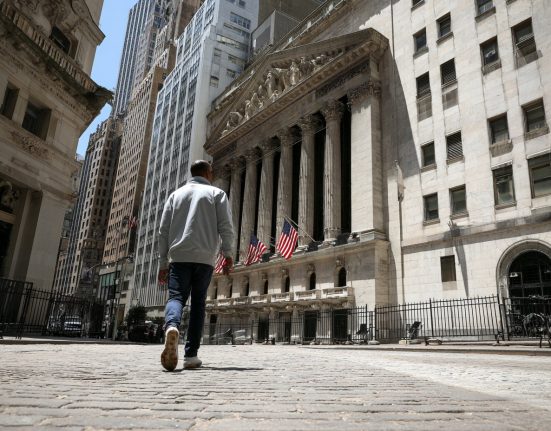After several years of grappling with a higher-for-longer interest-rate environment, private real estate has yet to find solid footing in 2025. Inflation that has staved off rate cuts and an unpredictable trade war are ushering in an ever-changing set of obstacles for investors and managers.
To date, one consequence of tariff-related upheaval in the US has been a divergence among domestic and international investors, says Scott Davies, co-head of real estate at manager Hamilton Lane.
“The biggest decline in flows has come from non-US investors, many of whom have pulled back because of uncertainty around not only tariffs, but also treatment of foreign capital in the US,” Davies tells PERE. Meanwhile, US institutions remain active, he says, compelled by pricing dislocations that “outweigh tariff-related risks.”
“These opportunities are market-specific and not available for mass consumption,” Davies adds. “Investors have to be active in the market in order to be in the right place at the right time.”
Buying versus building
In an environment where risk and upside can vary greatly from one market to the next, even within the same property type, managers are tweaking their strategies in ways both defensive and opportunistic. Davies says Hamilton Lane is “more cautious in industrial due to tariff and economic concerns,” and wary this year of development because of labor and material costs, preferring to acquire existing “core-like assets.”
Houston-based Hines, similarly, is now “focused on buying versus building,” says co-head of investment management Alfonso Munk, as tariffs and labor constraints have “strengthened the case for investing in existing assets.”
Both Hines and Hamilton Lane are among the managers that have made minor pivots in response to the shifting market.
In a survey of 200 real estate investment managers in the US conducted by software provider Agora in June, 44 percent said they had changed their investment plans in response to recent market volatility, while another 35 percent indicated they were considering doing so.
Among those making changes, nearly half of respondents – 49 percent and 48 percent, respectively – reported moving into new property sectors or expanding into new regions, while 44 percent said they were pausing deals.
One non-US manager pushing ahead with new strategies in the US is Sydney-based Macquarie Asset Management. Since striking a deal to divest its North American public asset management business in April, Macquarie formed a dedicated US senior housing platform in June, followed by a US self-storage platform in August.
While Macquarie had a previous self-storage venture focused on development in California, this expansion is aimed at existing assets. Like the senior housing platform, which Macquarie hopes will generate core-plus returns, it represents a lower-risk strategy in a sector of growing conviction. In the launch announcement, Macquarie head of US real estate James Fogarty called self-storage “a robust, recession-resistant sector.”
More housing, less life sciences
Most of the managers PERE spoke with have made measured, rather than dramatic, changes to their strategies. After years of market volatility, they emphasize, portfolios are already built to withstand periods of uncertainty.
“Rather than making reactive shifts, we’ve stayed focused on long-term, secular trends,” says Bob McClain, CEO of Dallas-based Crow Holdings Capital. The environment has CHC gravitating toward sectors with predictable demand and minimal capital needs, such as manufactured housing, food or service retail and convenience stores, he adds. But these are all categories in which the manager has been active for years.
Alexia Gottschalch, head of US real estate equity for the investment arm of UK insurance giant Legal & General, says the firm’s commitment to US real estate “remains strong,” but that it is highly focused on the impact of tariffs, particularly on construction, when making investment decisions.
Since forming its US real estate equity strategy two years ago, L&G has picked up a minority stake in Boston-based manager Taurus Investment Group and apartments in Massachusetts and Chicago.
But amid recent concerns, such as the impact of federal cuts on areas dependent on government employees, the firm has grown more cautious about “some markets where we would otherwise invest,” Gottschalch adds. For example, L&G is “unlikely to make any further investments in life sciences assets in the short term,” but is not ruling the sector out long-term, she notes.
Retail is another at risk sector, which had been an area of growing conviction for Hines after years of constrained supply. Now “tariffs have made the outlook for retail less certain as consumers pull back and supply chains adjust,” Munk says.
Justin Pattner, head of KKR’s Americas real estate equity business, stresses that the firm’s approach to real estate is based on long-term consumer, corporate and demographic trends, informed by its broader $689 billion private equity and credit portfolio. “We aren’t in the business of trying to time the market,” he says.
Right now, those trends are prompting KKR to lean into senior housing, multifamily and “select areas” of industrial where supply-chain management, digitization and e-commerce are likely to drive demand despite macro volatility. For now, the firm is not looking at office space or life sciences, which it views as oversupplied.
“We see the current environment as an opportunity to be front-footed,” Pattner says. “In any period of uncertainty, investor sentiment tends to be more cautious with less liquidity in certain corners of the market. But if you know what to buy and how to value it, it can be an exciting time.”








